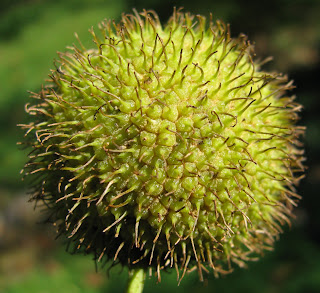In ancient Greece—where the foundations of Western
knowledge were laid—there was initially just the discipline of philosophy.
Science had yet to arise. (You might say that the old Greek philosophers sat
around and thought, rather than got off their duffs and went out to run
experiments—and you’d not be far off the truth.)
In the pre-Socratic period (roughly 6th to 3rd
centuries BCE) the philosophic aim of thinkers was to understand the basic
character of the world; what was referred to as “natural philosophy.” Those
ancient Greeks later turned their main attention from the natural world toward
humans. When Socrates, Aristotle, and Plato came along, they were definitely
interested more in ethics and politics. The branch of philosophy that addressed
the natural world morphed into what we know as science, splitting from
human-centered philosophy. The science-versus-philosophy rift had begun.
Aristotle and his cohorts felt that anything one needed
to know about anything could be discovered through reason alone. The breach
between philosophy and science widened in the growing realization by natural
philosophers (scientists) that knowledge of the world needed to be verified by
physical experiments. Human reasoning and logic alone can sometimes veer away
from reality; they need to be kept in check by empirical observation.
Galileo
(17th century CE) was one of the first true scientists; he advanced
the science of mechanics by verifying his ideas through experiment, thereby
trashing many of the ancient Greeks’ philosophic ideas about the natural world.
The disagreements between philosophy and science were
kept to a minimum by the later rise of a discipline that has come to be called
“philosophy of science.” Scientists, of course, cannot be absolutely objective,
even if they try to be. They are human, after all, and make assumptions, have
beliefs, and form opinions—some of them rather whacky at times. Thus,
philosophy of science attempts to keep scientists on track by asking questions
like: Can science be expected to lead to certainty and truth? What is the
so-called scientific method and what are its limitations? Is a new or updated
scientific theory/experiment closer to the truth than the old one? How do we
know? How do we tell true science from pseudoscience?
By the middle of the 20th century, however,
science became increasingly specialized and partitioned itself into countless narrow
areas of specialization. A person could spend a whole career in one of these
restricted fields and become so steeped in its esoteric knowledge that she
would be quite unable to converse in any depth with a scientist in what could
be presumed to be a closely-related field. For example, a biologist studying
the mating characteristics of a butterfly in Panama might not be able to
understand a biologist researching a caterpillar-caused disease in oak trees in
North America.
Specialization continued to add to fragmentation and
compartmentalization of the growing number of scientific disciplines. If
different scientists could not communicate very well with each other,
what is to be said about those individuals pursuing the study of the philosophy of science in those arcane
specialties? What appeared to be happening is that these “scientific”
philosophers were neither able to keep up with the increasingly specialized
scientists, nor maintain their connections to traditional philosophers. They
seem to have been drawn into a kind of no-man's land, where they find
themselves separated from both “pure” scientists and “pure” philosophers.
Where is this struggle going? I don't think anyone can
predict. It's a 2,000-year-old conundrum that has been wrestled with by
countless learned people. It appears to me that the current tussle is just the
latest facet of an enduring struggle between philosophers and scientists. The
fact that I can relate better to one camp (scientists) than the other, is just
a measure of the bias of my education and my personal predilections. I think
it's useful to try to understand the other camp, if only to widen one's
otherwise narrow perspective. In a fundamental way, we're all philosophers and
scientists.








